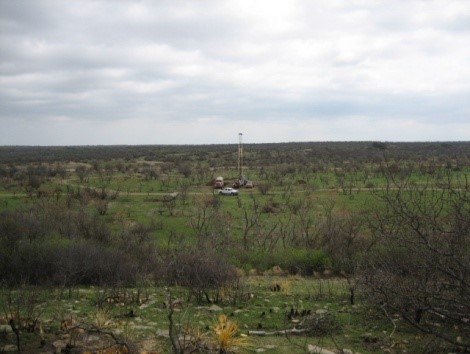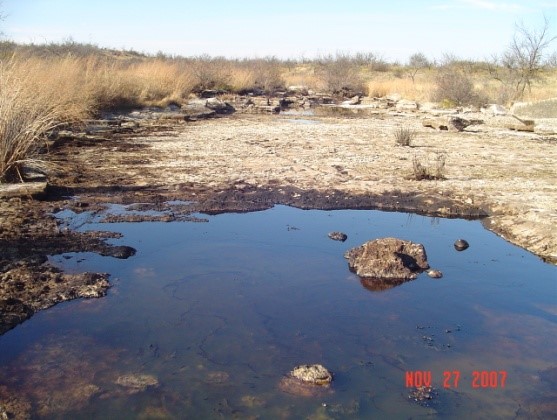Why did the customer contact us?
The producer of the lease implemented water injection or flooding of the producing formation at the site beginning in the early 1990s to enhance the recovery of crude oil. The client originally injected formation water from the producing formation into the designated injection wells. This included the suspect well located at the site. A water well completed in a deeper formation, which underlies the producing formation, also served as a source of makeup injection water for the lease. Therefore, Subsurface Investigation, Geologic Unit Evaluation and Fate & Transport Modeling were implemented.
Solutions provided:
The team identified a hydrocarbon and produced water seep in a creek which traverses the site. The producer immediately terminated production operations at the site in accordance with RRC instructions. They identified the seep in the creek to the east of the suspect injection well. Therefore, the RRC requested the producer initiate containment and remediation operations at the seep. This managed the discharge of phase-separated hydrocarbons (PSH) and produced water into the creek and backflow to the injection wells. The producer also deployed oil absorbent pads and booms and other equipment to manage the seep at the site.
Several plugged production wells completed in the 1940s on behalf of other producers are located at the site. Based on the available RRC documentation, they drilled each of these wells utilizing cable-tool drilling techniques. Additionally, they were plugged subsequent to completion due to an insufficient volume of crude oil for production or at a later date due to diminished production.
The producer re-entered select plugged cable-tool wells to evaluate each as a potential source of the seep. Ensolum personnel also documented the plugging materials and depths of each material associated with each cable-tool well, collected PSH samples and produced water samples. Additionally, Ensolum submitted the PSH samples for paraffin (P), isoparaffins (I), aromatics (A), naphthalene (N), and olefins (O) analysis. The lab commonly utilizes PIANO analysis or “fingerprinting” to evaluate the source and/or make-up of PSH samples. Ensolum submitted water samples for cations/anions (potassium, chloride, sulfate, calcium, magnesium, sodium, nitrate as nitrogen, alkalinity, bicarbonate alkalinity and carbonate alkalinity) analysis to evaluate the likely geologic formation where the water originated.
Ensolum personnel also reviewed RRC UIC records, Texas Water Development Board records regarding formation waters, and Texas Society of Petroleum Engineers publications. Our team reviewed formation water geochemistry to evaluate the potential source of the water.
In conclusion, Ensolum identified a historic cable-tool well as the likely source of contamination to the creek. This was based on the laboratory analytical results and observations of pressure at select data points during the completion of investigation activities. Furthermore, site geology and the exposure of an artesian brine aquifer to the historic cable-tool production wells supported this finding.
Visit our Past Projects Page to learn more about Ensolum’s previous projects.

Subsurface Investigation

Geologic Unit Evaluation